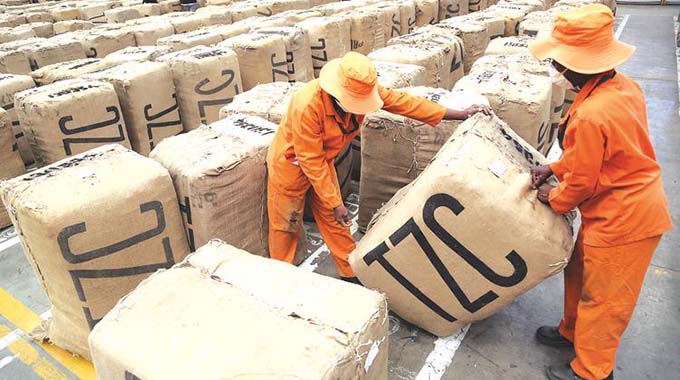Critical for tobacco farmers to comply with production legislation

Obert Chifamba
Agri-Insight
THIS year’s tobacco marketing season opened on April 29 following the coronavirus outbreak, which disrupted every aspect of people’s lives.
Traditionally, the season starts mid-March or even earlier.
Farmers trading their crop are doing so guided by numerous preventive measures put in place by Government to contain the spread of the virus.
For now, we can just wish the farmers a fruitful selling season without the usual price ceilings and payment challenges.
This week we look at what farmers are expected to do back home to ensure they have a continued dance with the highly lucrative crop way into the future.
There are legislations they have to follow religiously to prevent the spread of diseases that can ruin the crop.
Tobacco farmers, especially from the small-scale category who account for the largest tobacco output, must heed legislated tobacco planting procedures and stalk destruction dates to avoid the outbreak of PVY diseases.
Large-scale farmers usually have mechanised implements to carry out the exercise.
In recent years, there has been rampant disregard of the set rules and regulations that make tobacco farming the success story that it is today. Some of the farmers believe that they can increase yields and the subsequent returns from tobacco farming by sowing tobacco seed between April and May, whereupon they start planting as early as August and ignore legislated dates.
Others simply do not care to destroy remnant tobacco stalks in time and leave stalks on their fields to be destroyed by foraging animals in a development that does not break disease and pest cycles. Stalks must be destroyed by May 15 of every year. They are known for harbouring pathogens and pests, especially aphids, which exposes seedlings sown in June and subsequent field crops to devastating virus diseases such as potato Virus Y and bushy-top.
Diseases will in turn ruin the quality of future crops, prejudicing both the farmer and the nation of precious foreign currency that comes with selling high grade tobacco.
Tobacco production is a viable industry that has contributed to the growth of the economy and the well-being of thousands of people.
In Zimbabwe, more than 150 000 farmers are into tobacco production while close to one million people are directly dependent on the “golden leaf.”
Tobacco generates 30 percent of the country’s foreign currency, bringing in over US$600 million almost yearly. Last season, for instance, income from unprocessed tobacco and revenue from exports almost breached US$1 billion. This season, the country has already earned US$34 million just after 11 days of opening.
The industry supports many people who are employed in different downstream industries or directly in the production and processing of the golden leaf. Tobacco is ranked as one of the most economically important non-food crops in Zimbabwe, earning millions of dollars annually. Earnings from the tobacco production have improved the livelihoods of both smallholders, medium and large scale farmers and supporting the tobacco processing industry.
But despite all this economic relevance, tobacco production remains threatened by pests and diseases, as a result of non-compliance by farmers to the tobacco regulations. Statutory Instrument 711 of 1979 was put in place to curb the spread of tobacco pests by introducing tobacco-free periods every year in order to break the pests’ life cycle.
Pests and diseases affect quality of crop and are a trade barrier as most of the golden leaf (tobacco) is grown for export while on the other hand, the non-adherence by farmers to the Plant Pest and Diseases (Tobacco) Regulations leads to multiplication of vectors that transmit viral diseases thus reducing the quality of the golden leaf. Some of the vectors such as aphids, thrips and white flies transmit deadly viral diseases such as Tobacco Bushy Top, Tobacco Leaf Curl, Tomato Spotted Wilt and Cucumber Mosaic.
Farmers need to remember that all tobacco stalks in the field should be destroyed before May 15 every year, while all tobacco seeds may not be sown before the 1st of June every year and seedlings may not be planted out in the field before the 1st of September every year.
Also, all tobacco curing and handling premises at the farm should be cleaned and be free of tobacco by October 31 every year and all tobacco plants in the seedbeds must be destroyed before January 1 every year.
Agritex estimates that only 58 percent of tobacco farmers are compliant to the stalk destruction and seedbed establishment regulations, which is a worrisome observation because the outstanding 42 percent has the potential to ruin the party for everyone else should there be an outbreak of diseases and pests.
Maybe the fine of $100 that defaulting farmers are made to pay is not punitive enough to enforce compliance, which makes it critical for it to be reviewed. Under normal circumstances, farmers should just act responsibly and do what they are expected to do every time they produce the crop. Self-policing of the industry players is critical.
It is also disturbing to note that crops in the same family with tobacco will be caught offside if grown on the same piece of land on which farmers did not follow set rules and regulations.
If farmers cannot do self-policing, then it may become necessary for key stakeholders like contractors to give them conditions to meet before they can contract them with compliance issues being part of the requirements. If a farmer fails to meet the requirements then he does not qualify for funding.
On the other hand, the Tobacco Industry and Marketing Board (TIMB) can also set compliance requirements as part of the registration conditions every year while growers’ associations and farmers’ unions can also chip in with various ways of encouraging stalk destruction and strict observation of seedbed and planting requirements.
And now for some bit of history — in the 1960s, PVY affected tobacco in northern areas of the country and yield losses as high as 100 percent were recorded, especially on the late tobacco crops.
This prompted the introduction of the legislation on planting dates and destruction of stalks dates for tobacco, but the decision came at a costly price.









Comments